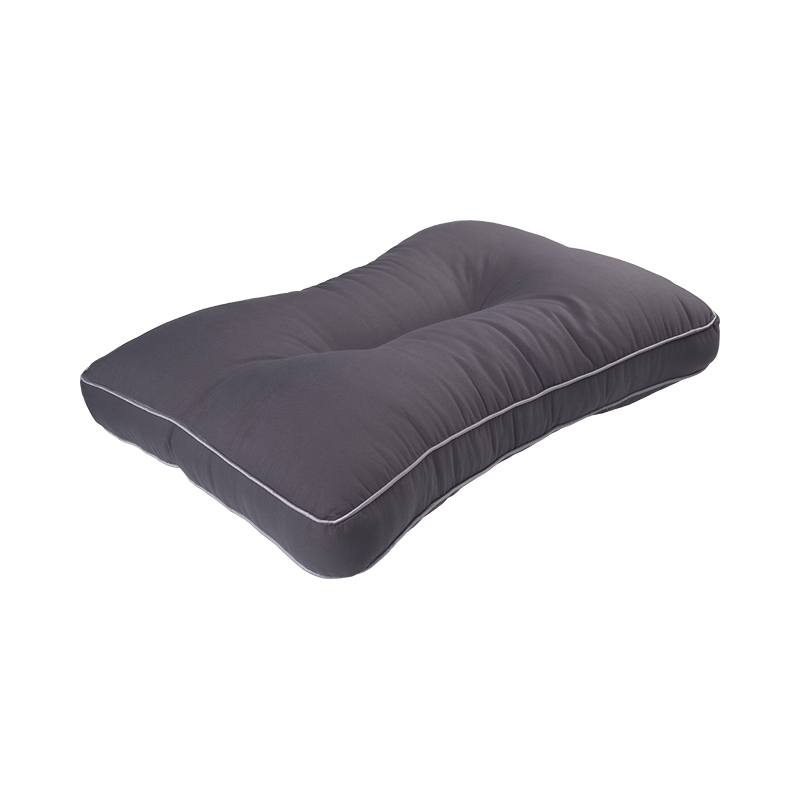Keeping hotel pillows clean and sanitary is crucial for maintaining guest comfort, safety, and satisfaction. Proper pillow maintenance not only ensures a pleasant sleeping experience but also extends the life of the pillows, reducing replacement costs. Here are some best practices for keeping hotel pillows clean and sanitary:
Use Pillow Protectors:Waterproof and Allergen-Proof Protectors: Use high-quality, zippered pillow protectors that are waterproof and allergen-proof to shield pillows from spills, stains, dust mites, bed bugs, and allergens. These protectors should be breathable to maintain comfort while providing an effective barrier.Regular Washing of Protectors: Wash pillow protectors at least once a week or after each guest checkout. This practice ensures that any accumulated sweat, oils, and allergens are removed regularly.
Frequent Pillow Laundering:Wash Pillows Regularly: Wash pillows themselves every 3 to 6 months, depending on the hotel's occupancy rates and guest turnover. This schedule helps to remove body oils, sweat, dust mites, and other contaminants that accumulate over time.Follow Manufacturer's Instructions: Always follow the manufacturer’s care instructions when washing pillows. Different types of pillows (e.g., down, feather, memory foam, synthetic) have specific care requirements.Use Mild Detergents: Use a mild, hypoallergenic detergent to prevent irritation and to extend the life of the pillows. Avoid using harsh chemicals or bleach unless necessary, as they can damage the pillow materials.

Proper Drying Techniques:Ensure Complete Drying: After washing, dry pillows thoroughly to prevent mold, mildew, and bacteria growth. Use a large-capacity commercial dryer on a low heat setting to avoid damage.Add Dryer Balls: Adding dryer balls (or clean tennis balls) to the dryer helps fluff pillows and prevent clumping, particularly for down and synthetic pillows.Air Out Memory Foam Pillows: For memory foam pillows that cannot be machine-washed, spot clean them and air them out regularly in a well-ventilated area to eliminate odors and moisture.
Regular Inspection and Replacement:Inspect Pillows Frequently: Conduct regular inspections for signs of wear, stains, odor, or damage. Replace any pillows that are flattened, lumpy, or stained beyond cleaning.Adopt a Replacement Schedule: Establish a regular replacement schedule, typically every 1 to 2 years, depending on the quality and usage of the pillows. This ensures pillows remain fresh, supportive, and sanitary.
Implement Sanitization Protocols:Steam Cleaning: For additional sanitization, use a handheld steamer to kill dust mites, bacteria, and allergens on the pillow surface. This can be done between guests as an added layer of cleanliness.UV-C Light Sanitization: UV-C light devices can be used to disinfect pillows and eliminate pathogens without using chemicals. This can be particularly useful for high-turnover periods.Antimicrobial Sprays: Use fabric-safe antimicrobial sprays to reduce microbial growth and maintain freshness. Ensure sprays are hypoallergenic and safe for guest use.
Rotate and Fluff Pillows Regularly:Rotate Pillows Between Rooms: Rotating pillows between rooms or different sides helps distribute wear evenly, prolonging their life and maintaining their shape.Daily Fluffing: Housekeeping staff should fluff pillows daily to help maintain their loft, remove dust, and ensure an inviting appearance.
Train Housekeeping Staff:Proper Handling and Care: Train housekeeping staff on the proper handling, laundering, and sanitization techniques for different types of pillows to prevent damage and ensure hygiene.Identify and Address Issues Promptly: Encourage staff to report any damaged or stained pillows promptly for replacement or special cleaning.
Guest Room Ventilation:Ensure Good Air Circulation: Good air circulation in guest rooms helps reduce moisture buildup, preventing the growth of mold and mildew on pillows.Use Dehumidifiers or Air Purifiers: In humid climates, consider using dehumidifiers or air purifiers in guest rooms to control humidity levels and improve overall air quality.
Consider Sustainable and Hypoallergenic Options:Use Hypoallergenic Pillows: Consider providing hypoallergenic pillows made from materials that are less likely to harbor allergens, dust mites, or bacteria.Eco-Friendly and Washable Materials: Opt for pillows made from sustainable, machine-washable materials that can withstand frequent laundering without losing their integrity.
Document and Monitor Pillow Hygiene:Maintain a Cleaning Log: Keep a detailed cleaning and replacement log for pillows, noting dates of washing, sanitization, and any issues identified. This practice helps ensure consistency and accountability.Conduct Regular Audits: Perform regular audits of pillow cleanliness and condition to ensure adherence to established hygiene standards and protocols.
By implementing these best practices, hotels can ensure their pillows remain clean, fresh, and sanitary, contributing to a positive guest experience and maintaining high standards of hygiene.